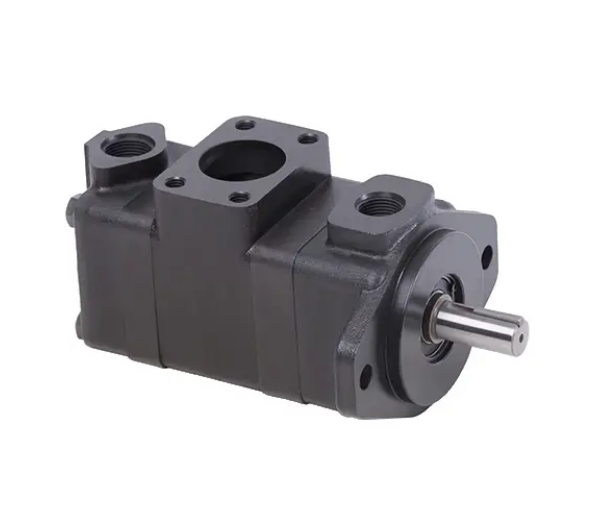Weak rotation: The reason is: insufficient output pressure and flow of the main pump or increased clearance between the internal fitting parts of the hydraulic motor.
Checking and troubleshooting methods:
(1) On the premise that the main circuit safety valve, overload valve and other accessories are intact, seal the interface between the oil inlet pipe and the motor (no oil leakage), and measure the maximum pressure of the oil supply line when the motor is rotating forward and reverse; then Connect the motor pipeline and measure the pressure under load; finally, compare the measured value with its technical requirements to determine the fault location.
(2) Because insufficient flow or low pressure of the hydraulic pump will reduce the motor output power, torque and speed at the same time, the flow measurement should be performed simultaneously with the pressure measurement.
(3) Check whether the gap between the distribution shaft and the rotor hole is within the allowable range (see Appendix 1), and check whether the rotation center lines of the distribution shaft and the cylinder hole are consistent. If it exceeds the allowable value, reassemble it. If the matching clearance between the distribution shaft and the rotor hole exceeds 0.6mm, or the distribution hole in the rotor has grooves along the circumferential direction; the matching clearance between the plunger and the rotor exceeds 0.05mm, or the matching clearance between the roller square shaft and the chute exceeds 0.05mm, all This will cause the low-speed, high-torque internal curve motor to rotate weakly. If the two walking motors are not synchronized, the track will deviate.
2.Leakage
The possible reasons are: the distribution plate (distribution hole) is worn or strained, and the plunger hole and plunger are worn, resulting in poor sealing between the high and low pressure chambers, making it difficult to form high pressure in the working chamber, resulting in insufficient oil inflow; the amount of leakage is related to the pressure difference between the inlet and outlet of the motor, Oil viscosity and displacement are related to the flow distribution structure and processing and assembly quality. Unstable leakage will cause the motor to rotate unstable, jitter, or stop from time to time. The oil return line is not smooth, which promotes the increase of low-pressure oil pressure and causes the skeleton oil seal. The sealing effect is reduced, causing the oil to leak from the motor output shaft end to the reducer housing (or inside the brake); the motor output shaft support bearing is damaged, which will cause eccentric leakage and abnormal noise; internal leakage will cause the motor’s locking braking performance to decline, which cannot Stopping at a certain position accurately will cause the excavator to slip, which is extremely unsafe.
Inspection and troubleshooting methods: Check whether the oil distribution shaft or the inner surface of the cylinder hole is scratched, clean it first, and replace it if it is serious; if there is roughness or grooves on the mating surface of the plunger and plunger hole, grind or polish the mating surface. Then grind it again, or replace it if it is serious; check whether the gap between the plunger and the plunger hole mating surface is too large (generally it should be within 8% of the plunger diameter), and replace it if necessary; if there is leakage in the high-speed motor, you can disassemble and inspect the motor leakage Oil pipe, measure the oil leakage amount of the shell per unit time during idling and load to determine the degree of failure.
Post time: Jan-23-2024

